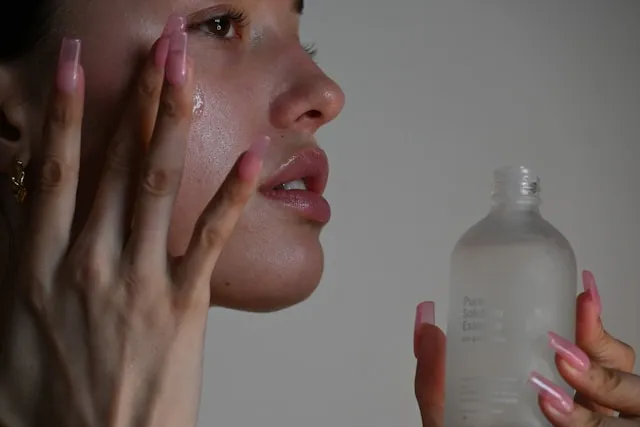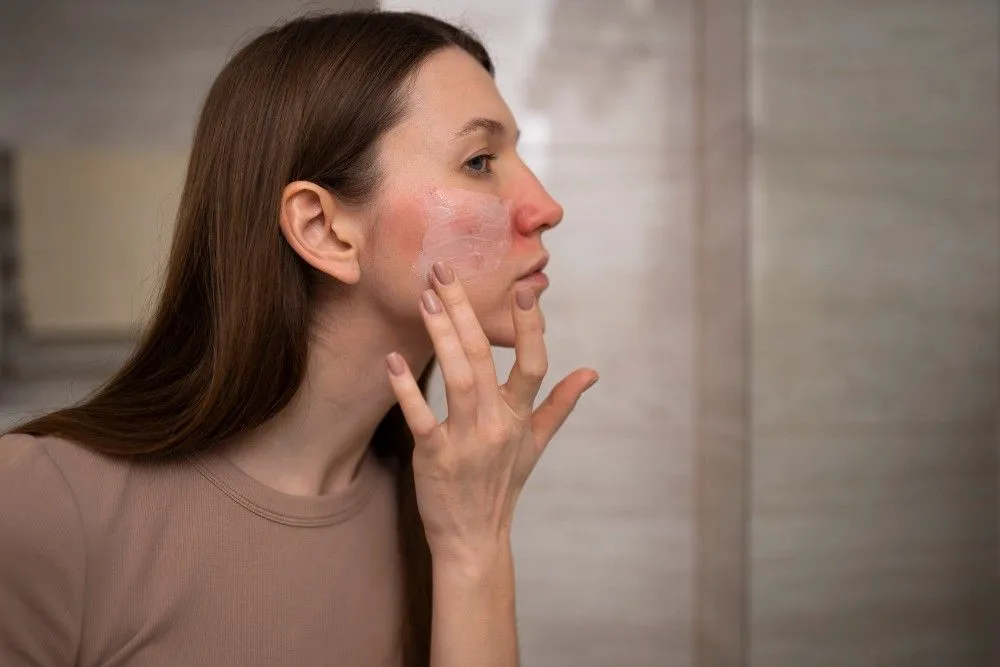When it comes to skincare, a common question is the difference between retinol and tretinol. These two ingredients are well-known for improving skin. Both are types of Vitamin A, but they work differently and offer unique benefits.
A study even found that retinoids can help reduce wrinkles after three months of use. That’s impressive! But how do you know which one is right for you? Let’s find out what sets them apart, what results to expect, and how to choose the best fit for your skin.
What Are Retinol and Tretinol?
Retinol and tretinol come from the same family, known as retinoids. Retinoids are Vitamin A derivatives that work at a cellular level to improve skin texture, fight signs of aging, and reduce acne. Retinol is milder and often found in products you can buy without a prescription. It’s great for those just starting with retinoids or those with sensitive skin.
Tretinol is an informal name often used for tretinoin, a stronger, prescription-only option that offers quicker and more noticeable results. Because it’s already in its active form, retinoic acid, tretinol doesn’t need to convert as retinol does. This means it acts fast but may cause dryness, peeling, and irritation at first.
Both help promote collagen production, speed up cell turnover, and keep the skin looking youthful. But tretinol’s strength means it should be used with caution, especially for beginners.
Key Differences Between Retinol and Tretinol
When it comes to skincare, understanding the differences between retinol and tretinol can help you choose the right product for your needs.
Both belong to the retinoid family and are effective for addressing concerns like acne, wrinkles, and skin texture. However, their potency, side effects, and suitability for different skin types vary significantly.
Below is a quick comparison to help you decide:
|
Feature |
Retinol |
Tretinol |
|
Potency |
Lower potency; requires conversion |
Higher potency; works immediately |
|
Skin Tolerance |
Milder; gentler on the skin |
Stronger; may irritate sensitive skin |
|
Side Effects |
Minimal; less likely to cause irritation |
More likely to cause redness and peeling |
|
Usage |
Beginner-friendly; start slow |
Advanced users; gradual introduction |
|
Best For |
New skincare users or sensitive skin |
Experienced users seeking faster results |
Tretinol Before and After: What to Expect?
Wondering how your skin will change with tretinol? Tretinol’s before and after results can be impressive. In the early weeks, it’s normal to experience some dryness, peeling, and even a purging phase. But these are temporary. After around six to eight weeks, you’ll start seeing a more even skin tone, smoother texture, and reduced fine lines.
|
Time Period |
Skin Reaction |
Visible Results |
|
Week 1-2 |
Dryness, peeling |
Minimal changes |
|
Week 3-4 |
Increased cell turnover |
Fading of fine lines |
|
Week 5-6 |
Reduced redness |
Noticeable texture improvement |
|
Week 7-8 |
Balanced skin tone |
Reduction in hyperpigmentation |
|
3 Months |
Skin acclimated |
Dramatic reduction in wrinkles and scars |
|
6 Months |
Consistent improvements |
Optimal results with continued use |
Using tretinol requires patience, but the results can be worth it. With retinol, you’ll see gradual changes without as much irritation. Both options offer benefits, but tretinol delivers quicker results, while retinol takes time and is easier on the skin.
Also Read: Tretinoin Before and After: Your Skin Transformation Guide
What Do Dermatologists Say About Tretinol?
Tretinoin is praised as the ‘gold standard’ by many dermatologists. This term is mostly associated with topical treatment for conditions like acne and skin hyperpigmentation or wrinkles.
Dr. Anisha Patel, a dermatologist at MD Anderson Cancer Center, notes that "Retin-A is a great product... it makes your skin look brighter."
Dr. Alpana Mohta highlights tretinoin's versatility, stating it "has revolutionized skincare with its remarkable ability to treat acne, diminish wrinkles, promote skin turnover, and reduce hyperpigmentation."
However, experts caution about potential side effects. Dr. Marisha Garshick advises that "tretinoin is strong and not suitable for everyone or all skin types," emphasizing the importance of a gradual introduction to minimize irritation.
Overall, dermatologists endorse tretinoin for its effectiveness but recommend personalized usage under professional guidance.
How To Choose Between Retinol and Tretinol?
Choosing between retinol and tretinol depends on your skin type, goals, and tolerance. Here’s a quick guide to help:
|
Skin Problems |
Best Option |
|
New to retinoids |
Retinol: gentle and beginner-friendly |
|
Sensitive skin |
Retinol: safer, less likely to irritate |
|
Anti-aging focus |
Both work; Tretinol offers faster results |
|
Treating acne |
Tretinol: more effective for tough acne |
|
Quick improvements |
Tretinol: stronger but requires caution |
|
Unsure where to start |
Retinol: start here, move to Tretinol under guidance |
If you’re not sure where to start, begin with retinol and move to tretinol under a dermatologist’s guidance if needed. That way, you’ll see how your skin reacts before committing to a stronger product.
Conclusion
Deciding between retinol and tretinol comes down to understanding the difference between both and knowing your skin’s needs. Retinol provides a gentler introduction to retinoids, while tretinol delivers faster, more powerful results. Both are effective, but choosing the right one for you will depend on your skin type, goals, and tolerance level.
To make the best choice, consult a dermatologist. Their expertise will guide you toward the ideal option for your skincare journey.
अक्सर पूछे जाने वाले प्रश्नों
What is the main difference between retinol and tretinol?
The main difference between retinol and tretinol is their strength and how quickly they act. Tretinol is stronger and works faster, while retinol is milder and takes time to show results.
Can I use retinol and tretinol together?
No, using both together isn’t recommended due to the risk of irritation. Choose the one that best fits your needs and introduce it slowly.
How long does tretinol take to show results?
Typically, results start appearing within six to eight weeks, with optimal changes by three months if used consistently.
What side effects come with tretinol?
Common side effects include dryness, redness, and peeling, especially in the beginning. Sun sensitivity also increases, so sunscreen is essential.
Which is better for anti-aging: retinol or tretinol?
Tretinol works faster and is stronger for anti-aging. However, retinol also offers great anti-aging benefits with a milder effect on the skin.
Is tretinol safe for sensitive skin?
Tretinol can be too harsh for sensitive skin. Dermatologists often recommend starting with retinol for sensitive skin, as it’s gentler and less likely to irritate.
लेखक





